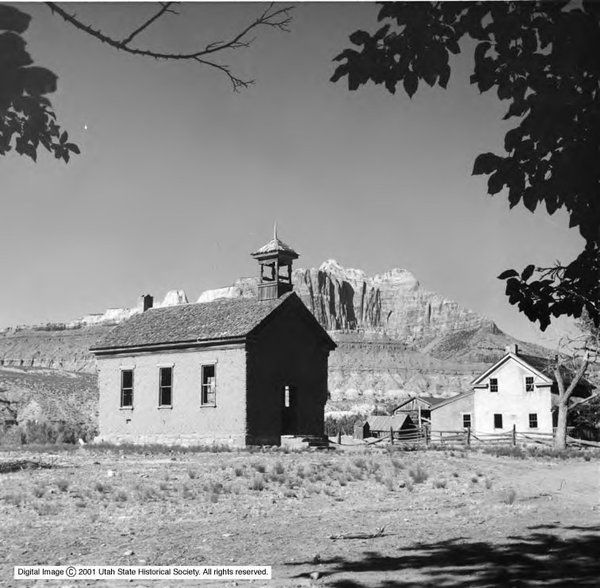Dublin Core
Title
Description
Utah has little regular rainfall, so irrigation canals and ditches are the key to channeling water to farms. When Mormon settlers built irrigation systems in the mid-19th Century, those systems worked fairly well in northern Utah. But irrigation was much more difficult in the south, where sandy soil soaked up water, stream levels were unpredictable, and flash floods washed away infrastructure. Many Washington County settlements along the Virgin River struggled with its volatile waters. But Grafton was the only one where water eventually forced residents to abandon the town.
Grafton was originally settled in 1859 as a town called Wheeler, which was destroyed a couple years later by flooding in the Great Washout of 1862. Moving a mile upriver, residents re-established their settlement as Grafton. They built an irrigation ditch system and the town quickly grew. Then, like clockwork, water made its presence felt. Silt piled up in the irrigation ditches at a much higher rate than in neighboring settlements. Farmers had to dredge their ditches at least weekly – if not more frequently – to keep water flowing into their fields.
Grafton was the only town in the area on the south bank of the Virgin River and was fairly isolated. When conflicts with Navajo and Southern Paiute peoples began during the Blackhawk War, residents evacuated in 1866 for fear of attack. A series of severe floods during this time discouraged many residents from moving back. Those who doggedly returned to their farms in Grafton were determined to not let the water situation drive them away. But, the River eventually won, as flooding continued to destroy farmland and dreams.
By 1890, the number of residents in Grafton had dwindled to four families. In 1921 the local branch of the LDS Church disbanded, leaving the town without any institutional presence. Two decades later, in 1944, the last hold-out family finally left. Grafton became one of the most famous ghost towns in the West – all due to its lost war with water.
Creator
Source
_______________
See “Grafton Heritage Partnership Project,” online at https://graftonheritage.org/ and Utah State Historic Preservation Office

